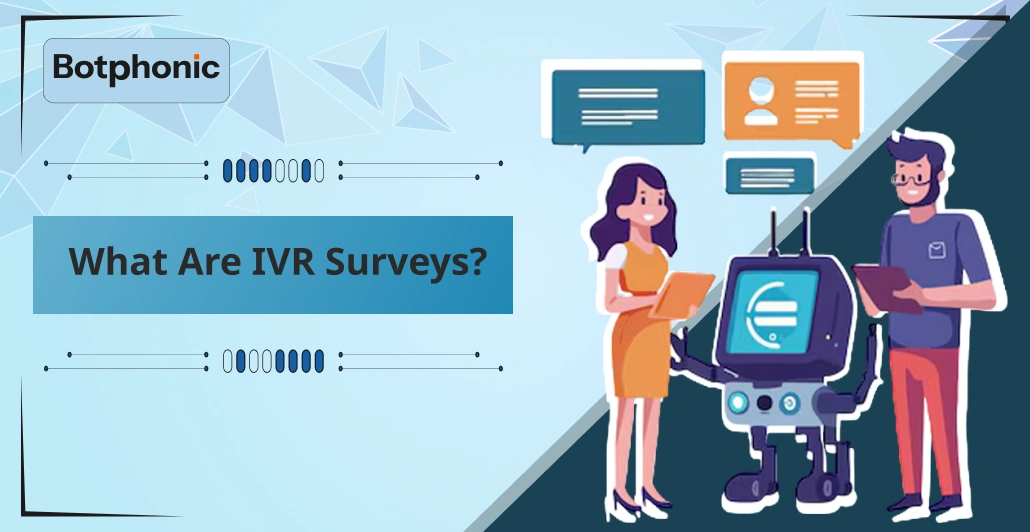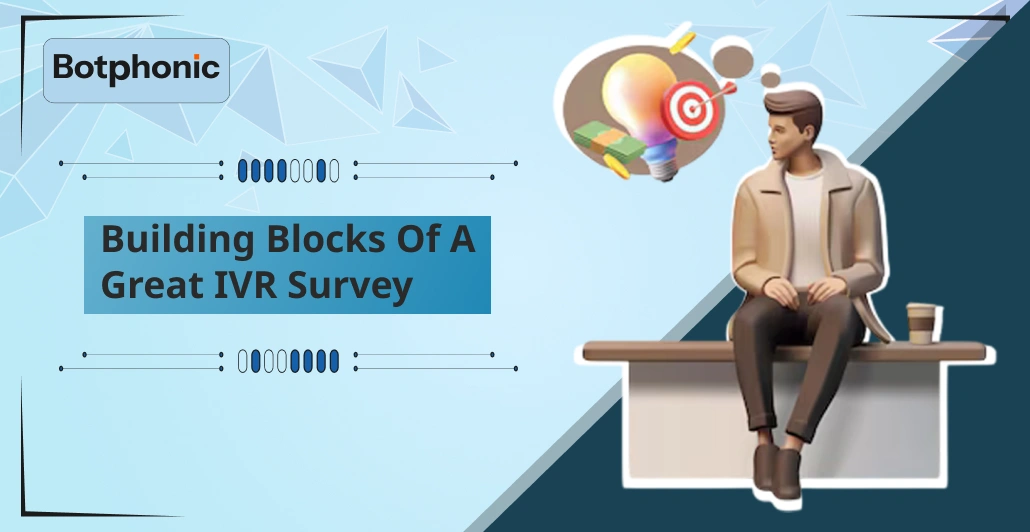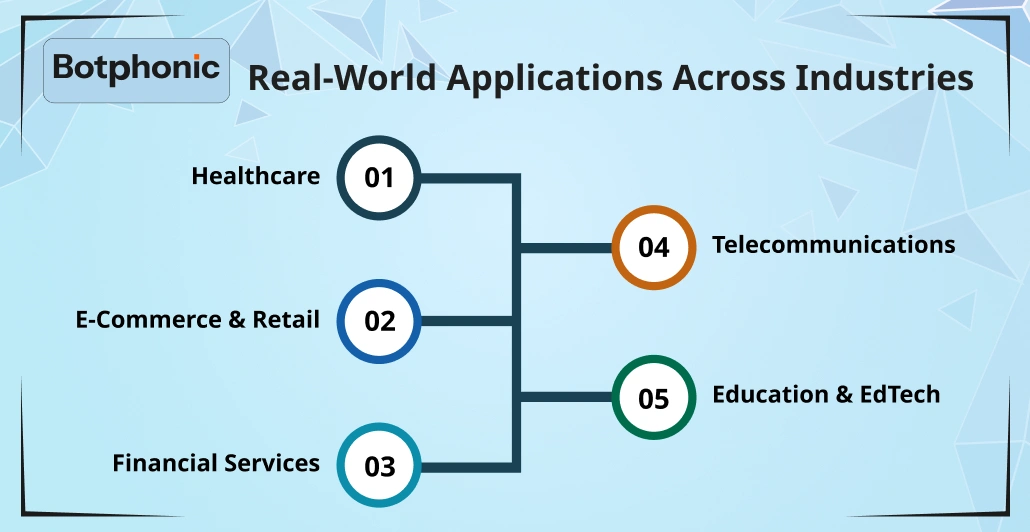
Summarize Content With:
Summary
In this blog, we have discussed how IVR surveys can be created and automated as best practices for capturing real-time customer feedback. We discussed various ways IVR is employed across industries, the technology involved in creating it, some common pitfalls, and ways to make surveys more engaging and successful, especially when paired with tools like an AI call assistant.
Introduction
What if the easiest way to grow your business were simply to listen?
Not by guessing. Not by endless emails. But by listening to the customers’ voice and actually hearing them.
There is some brilliant advice from Jeff Bezos that goes something like this: “If you don’t listen to your customers, someone else will.” The world today cannot give credence to that advice—it must be survival. As customer experience ranks just behind price and quality in the buying decision, feedback sustains businesses that build smarter, faster, and more responsive solutions.
So here is the rub: How can you get honest feedback from your customers without overloading your team? Welcome, IVR surveys: no longer the awkward talking-to-robots kind of interaction. These days, conversational AI powers the system, aided by an AI call assistant that engages in real-time conversations with human-like nuances, making feedback collection so effortless that one actually enjoys the process.
When well set up, such a feedback system goes beyond collecting feedback to connecting with people, understanding them, and taking action. Let’s look into how this can be done.
What Are IVR Surveys?

IVR Surveys (Interactive Voice Response Surveys) are computer-generated calls that provide customers with an opportunity to provide feedback through a voice system. They may also be carried out after a service visit, after an order or even during preventative contact.
Compared to email surveys, which are often ignored, or web forms that require customers to navigate a series of clicks to complete, IVR surveys provide customers with the opportunity to leave their feedback immediately, while it is still fresh. You may get satisfaction ratings, Net Promoter Scores, product opinion, or even open-ended feedback in voice recording forms.
These systems are mostly constructed on the conversational IVR platform. This implies that customers would no longer be required to press buttons whenever responding to something; instead, they can simply talk, and the system will react by storing and processing the information, which is later viewed by your team.
Why Use IVR Surveys Over Other Methods?
The magic behind IVR surveys lies in timing and convenience. This is how they perform better than other feedback channels:
- High Engagement: Utilising an automated phone survey as a response to a phone call or delivery is easier and more likely to occur immediately afterwards, assuming it is an integral part of a seamless process.
- Instant Results: Automated outbound calls give you real-time feedback. When compared to email surveys that go unopened for days or more.
- Scaled Economically: This is a game changer for businesses serviced by a small business automated answering service, allowing them to collect thousands of responses without any increase in manpower.
- Low Barrier: Type, click or log in. Just talk.
It is not only practical but also smart. When using a contemporary automated dialer system, you can obtain ongoing feedback, immediately mark bad responses, and perform data-informed decision-making functions with ease.
Building Blocks of a Great IVR Survey

What is the secret sauce? Let us find out. What is a great IVR Survey? A basic automated phone attendant will not be enough. You will have to engineer trust, flow, and empathy.
1. Start With a Friendly Introduction
It is all about first impressions. Your voicemail answering system must never receive cold calls. Get started by clearly saying hello and introducing why you need the person on the phone. Argue about the amount of time one is supposed to spend on completing the survey and assure them that it will not be long.
Example: “Hi! It is Anna of [Your Brand]. We would like to know your recent experience with us. This will only consume 60 seconds.
This creates credibility and returns control to the customer, which is the key to quality conversational IVR.
2. Make it Short and Sweet.
Nobody will enjoy taking a long survey, and not on the phone. Use approximately 3-5 questions. As long as your system allows it, provide a field to leave open-ended feedback once the survey questions have been completed.
3. Adhere to the Natural language and Tone.
Burn the script. Write your IVR script in the manner of a real person. The most desirable auto telephone systems feature an AI voice that mimics a human voice. You should avoid making your script sound like a bureaucratic question-and-answer session; instead, it should feel more like a two-way conversation.
Avoid saying: “Please rate your experience from one to five.”
Ask them to rate their satisfaction with your service on a 1-5 scale.
4. Collect Both Quantitative and Qualitative Data
Ratings are nice, but at times, voice responses are even more rewarding. Be sure that your auto attendant phone system records and logs verbal remarks. And this data is immediately transcribed by modern automatic call handling systems.
Automating the IVR Survey Workflow
It is one thing to make good IVR Surveys. Another possibility is to automate them on the scale. This is how it can work in the real business.
1. Connect Surveys to Call End Points
Offer the option to stay on the line by automatically placing a Conversational IVR when a support call or order confirmation concludes with a polite request to the customer to remain on the call. This can be done within seconds by the proper automated dialer app.
2. Set up Smart Follow-ups
Not all customers will complete such a survey on the first attempt. Apply a smart, intelligent outbound call pattern that re-dials at the best times. You should not do it too much; just a reminder works well.
3. Integrate With Your CRM or Ticketing System
Connect survey results to customer profiles with the help of a business phone system that has an auto attendant. In this way, your representatives will have the opportunity to determine whether a person left a negative review and contact them in a personalised way.
Real-World Applications Across Industries

1. Healthcare
Hospitals use IVR Surveys after appointments with patients to determine their satisfaction, the clarity of instructions, and the quality of care.
This real-time data assists medics to detect deficiencies in services and record follow-ups, enhanced communication and service profiling for the patients without the additional workforce, in addition to the desirable quality patient experience without compromising the regulations, such as HIPAA compliance.
2. E-Commerce & Retail
Retailers use IVR Surveys to find out how satisfied customers are with delivery, the quality of products, and the service experience.
This input assists in streamlining supply chains, identifying packaging issues, and minimising returns. It also develops loyalty as it makes customer understand that their feedback is essential and that it makes a difference in the future.
3. Financial Services
Banks and financial institutions utilise IVR in various forms, including post-application loan feedback, post-service call feedback, and post-online transaction feedback.
Such surveys can provide an evaluation of the agent’s performance, simplify onboarding steps, and even identify possible friction points, while maintaining the privacy of the data. The insights are injected into the CRMs to optimise strategic improvement and keep customers.
4. Telecommunications
Telecom companies use IVR surveys to conduct follow-ups after troubleshooting or upgrading services.
This is useful for tracking the performance of technicians, the convenience of app use, and customer satisfaction. Such responses can be used to issue automated alerts to promote real-time intervention, with the resulting effect of minimising churn and ensuring an easier customer experience in all forms of support.
5. Education & EdTech
IVR enables educational establishments and online learning facilities to seek student or parent opinions on course, instructor, and learning platform effectiveness.
The given methodology will be accessible to as many people as possible, and, particularly, individuals with a low internet connection, as well as aid in the formation of changes in the curriculum or improvement of a platform on the basis of the real experience of learners.
Common Mistakes to Avoid
Goodwill is not always good enough, and careless. These are some of the pitfalls to avoid:
- Sounding like a robot: Your script should not be too cool, or customers will use the hang-up button.
- Too many questions: Do not waste their time.
- Failure to respond to feedback: Customers also wish to see that their voice has some impact.
- Neglecting phone quality: It is recommended that a steady auto phone answering mechanism be invested in in order to avoid audio chopping and stuttering.
The Future of IVR Surveys: Smarter, Smoother, More Human
IVR Surveys are in a fast-changing world. As Conversational IVR and real-time sentiment analysis soars, businesses will be able to do more than just collect information; instead, they will have the ability to predict behaviour, eliminate churn, and make interactions personalised and at scale.
Consider the case of an automated call handling system able to determine that a customer is irritated and connects the voice to a live agent automatically, and records all observations in a corresponding log. That is not science fiction; it is here already.
Automated phone powered by AI is changing the way brands can listen, respond, and improve. Empathy is all about creating a connection, and whether you are a single entrepreneur, may be on a small business IP phone system that boasts an auto attendant, or a giant brand executing automated outbound calling across the world, scaling empathy is the same.
Conclusion
Listening to advertisers win in the noisy world of e-commerce. When you use modern IVR Surveys, you are not guessing what the customers might be saying to you; you are even hearing them live, at scale, and with context.
They are not mere tools, but they are trust-builders.
No matter your level of entry in using a small business automated answering service or your larger call center with an automated dialer – it is a good, sound, green solution to capture automated feedback in terms of building loyalty and retention with IVR Surveys, as well as remain ahead of the curve in this step.
Stop asking people for opinions in a traditional manner. Let your automated telephone system do the heavy lifting, just make sure it is doing it with heart.
Having trouble getting your IVR Surveys up and running, or considering an AI-driven voice assistant for your company? A platform, Botphonic, is more flexible and allows customising voice automation that sounds human and can be used to follow up, provide feedback, and customer service responses.

